本期要闻 Highlights of the Month
生态环境部、国家发展和改革委员会、公安部、交通运输部、国家卫生健康委员会:国家危险废物名录(2025年版)
Ministry of Ecology and Environment, National Development and Reform Commission, Ministry of Public Security, Ministry of Transport, National Health Commission: National Catalogue of Hazardous Wastes (2025 Edition)
生态环境部、国家发展改革委、公安部、交通运输部和国家卫生健康委修订发布了《国家危险废物名录(2025年版)》,该名录自1998年首次印发实施以来,曾历经2008年、2016年和2021年3次修订。
本次修订共计列入470种危险废物,相比2021年版《名录》总共增加了3种。其中,根据危险废物产生工艺和管理实践,整合2种废物代码、拆分1种废物代码;新增4种普遍具有危险特性的锡冶炼废物。此外,修改了个别危险废物的文字表述或危险特性表述,新增了6条注释,明确《名录》所列物质均应首先属于固体废物,明确对医药废物,废药物、药品,废矿物油与含矿物油废物,涂料、染料废物,含醚废物,含有机卤化物废物等废物范围做出限定。如,废弃的维生素不属于医药废物或废药物、药品类危险废物,废弃的动植物油脂不属于废矿物油与含矿物油废物。
附录部分删除了2条豁免规定,新增了1条豁免规定,修改部分危险废物豁免条件表述。例如“铝灰渣和二次铝灰”从豁免清单删除;含油金属屑的豁免条件增加了“离心除油”的方式等。
《名录》自2025年1月1日起施行,相关企业需要做好《名录》有关修订内容与危险废物信息化管理以及管理计划、转移联单、许可证等环境管理制度衔接工作。针对实施豁免管理的危险废物,企业应根据修订内容核实相关豁免条件的适用性,确保依法依规实施豁免管理。涉及本次修订增加或合并危险废物种类的产废企业,应及时变更危险废物管理计划和排污许可证等信息。
The National Catalogue of Hazardous Wastes (2025 Edition) is jointly revised and released by the Ministry of Ecology and Environment, the National Development and Reform Commission, the Ministry of Public Security, the Ministry of Transport, and the National Health Commission. Since its initial publication and implementation in 1998, the Catalogue has been revised three times in 2008, 2016, and 2021 respectively.
This Revision includes a total of 470 types of hazardous wastes, three more types than 2021 edition. The changes include consolidating two waste codes and splitting one waste code based on hazardous waste generation processes and management practices., adding four types of tin smelting wastes with hazardous characteristics. Additionally, the textual descriptions or hazard characteristics of certain hazardous wastes have been modified, and six new annotations have been added. These annotations clarify that substances listed in the Catalogue must be defined as solid waste at the first place, and clarify the scope for medical waste, pharmaceutical waste, waste mineral oil and waste containing mineral oil, paint and dye waste, ether-containing waste, and organic halide-containing waste. For instance, discarded vitamins are not classified as medical or pharmaceutical hazardous waste, and discarded animal and vegetable oils are not categorized as waste mineral oil or waste containing mineral oil.
In the appendix, two exemption provisions are deleted, and one is newly added, along with some rewording of exemption conditions. For example, “aluminum ash slag and secondary aluminum ash” have been removed from the exemption list, while the exemption conditions for oily metal scraps now include the “centrifugal oil removal” method.
The revised Catalogue will take effect on January 1, 2025. Relevant enterprises must align their environmental management systems with the updates, including hazardous waste information management, management plans, transfer manifests, permits, e.g. For hazardous wastes subject to exemption management, enterprises must verify the applicability of exemption conditions according to the revisions to ensure compliance with legal requirements. Waste-generating enterprises affected by the newly added or consolidated types of hazardous wastes in this revision should promptly update their hazardous waste management plans and pollution discharge permits.
最新国家法律法规National Updates
Standing Committee of the National People’s Congress: Energy Law of the People’s Republic of China
能源法自2006年成立起草组,立法工作前后延续十八年,四次向全社会公开征求意见,现于第十四届全国人民代表大会常务委员会第十二次会议通过,自2025年1月1日起施行。能源法是能源领域的基础性、统领性法律,涵盖了能源规划、能源开发利用、能源市场体系、能源储备与应急、能源科技创新、监督管理等内容。能源法首次以立法形式明确了优先开发利用可再生能源,合理开发和清洁高效利用化石能源,推进非化石能源安全可靠有序替代化石能源,提高非化石能源消费比重的能源开发利用政策导向。能源法设立了可再生能源消费最低比重目标制度,要求完善可再生能源电力消纳保障机制,对消纳责任主体做出规定。建立了绿色能源消费促进机制,明确实行可再生能源绿色电力证书制度。同时,就扩大绿色能源消费提出了具体要求,规定公共机构应当优先采购、使用可再生能源等清洁低碳能源以及节约能源的产品和服务。
The Energy Law has undergone an 18-year legislative process since the establishment of the drafting group in 2006. It was opened for public consultation four times and has now been passed at the 12th session of the Standing Committee of the 14th National People’s Congress. The law will come into effect on January 1, 2025.The Energy Law serves as a fundamental and overarching piece of legislation in the energy sector, encompassing areas such as energy planning, energy development and utilization, energy market systems, energy reserves and emergency response, energy technological innovation and supervision, etc. For the first time, the law formally establishes the policy priority on renewable energy development and utilization, promoting the rational and clean utilization of fossil fuels, advancing the safe, reliable, and orderly replacement of fossil fuels with non-fossil energy, and increasing the proportion of non-fossil energy in overall energy consumption.
The Energy Law establishes a target system for the minimum consumption of renewable energy, requiring the improvement of consumption guarantee mechanisms of renewable energy electricity and specifying the requirements for the responsibility entities of consumption. It also creates a mechanism to promote green energy consumption and introduces a green electricity certificate system for renewable energy. Additionally, the law sets forth specific requirements for expanding green energy consumption, stipulating that public institutions should prioritize procuring and using renewable energy and other clean, low-carbon energy, as well as energy-saving products and services.
Ministry of Ecology and Environment: Measures for the Supervision and Administration of Sewage Outfalls on Rivers (2024)
办法适用于入河排污口设置审批、登记以及相关监督管理活动。办法适用于所有直接或者通过管道、沟、渠等排污通道向江河、湖泊、运河、水库等水体排放污水的口门,包括工业排污口(工矿企业排污口和雨洪排口、工业以及其他各类园区污水处理厂排污口和雨洪排口等)、农业排口(规模化畜禽养殖排污口、规模化水产养殖排污口等)、其他排口(大中型灌区排口、规模以下畜禽养殖排污口、规模以下水产养殖排污口、农村污水处理设施排污口、农村生活污水散排口等),明确了入河排污口审批、登记管理范围,审批权限,审批程序,禁止设置、严格控制设置入河排污口的具体情形,以及同意设置、变更、注销等方面的要求。办法自2025年1月1日起施行。
The Measures applies to the approval, registration, and related supervision and management activities for discharge outfalls into rivers. It covers all outfalls that discharge wastewater directly or via pipelines, ditches, canals, or other discharge channels into water bodies such as rivers, lakes, canals, and reservoirs. This includes:Industrial discharge outfalls (e.g., outfalls from industrial and mining enterprises, stormwater, and flood discharge outfalls, and discharge outfalls from sewage treatment plants in industrial and other types of parks).Agricultural discharge outfalls (e.g., outfalls from large-scale livestock and poultry farming and large-scale aquaculture operations).Other discharge outfalls (e.g., outfalls in large and medium-sized irrigation areas, outfalls from smaller-scale livestock and aquaculture farming, rural sewage treatment facilities, and dispersed rural domestic sewage outfalls).The Measures clarify the scope of approval and registration management, approval authority, procedures, catfalls prohibited or strictly controlled installation condition for the discharge outfalls, and requirements for approval, modification, and cancellation.
The Measures will come into effect on January 1, 2025.
Ministry of Ecology and Environment and Six Other Departments: Action Plan for Source Prevention and Control of Soil Pollution
行动计划按照“防新增、去存量、控风险”的总体思路,部署了系列任务,提出到 2027年,土壤污染源头防控取得明显成效,土壤污染重点监管单位隐患排查整改合格率达到 90%以上,受污染耕地安全利用率达到94%以上,建设用地安全利用得到有效保障。到 2030 年,各项指标进一步提升。办法围绕完善土壤污染源头预防体系、落实污染防治措施、解决长期积累的严重污染问题等重点方面做出部署,提出将严格重点行业企业选址,推动重点行业强制性清洁生产审核,强化前端污染预防,严格重点单位监管,按照“污染不落地、落地可收集”的原则,推动重点行业实施地面防渗、管道可视、设施围堰等建设。
The Action Plan, based on the overarching approach of “Preventing new pollution, reducing existing pollution, and controlling risks,” outlines a series of tasks and sets goals for significant progress in soil pollution prevention and control by 2027. These include achieving a compliance rate of over 90% for rectification of potential pollution at key soil pollution supervision units, ensuring a safe utilization rate of over 94% for contaminated farmland, and effectively safeguarding the utilization of land for construction. By 2030, the performance divided by those indicators shall be further improved.
The Action Plan focuses on key areas such as improving the soil-pollution-source-prevention system, implementing pollution prevention and control measures, and addressing severe pollution issues that have accumulated over time. It proposes stricter site selection and mandatory clean production audits in key industries, enhancing upstream pollution prevention, and tightening supervision of key entities. Following the principle of “no pollution left on the ground; what is left is collectible,” the plan advocates for measures such as implementing ground anti-seepage systems, visible pipelines, and facility cofferdams in key industries.
Ministry of Ecology and Environment: Implementation Plan for Comprehensive Enforcement of the Pollution Discharge Permit System
实施方案明确了排污许可核心制度建设实施路径,深化排污许可制度改革路径和固定污染源“一证式”管理路径。方案提出到2025年全面完成工业噪声、工业固体废物排污许可管理,制修订污染物排放量核算方法等一批排污许可技术规范,基本完成海洋工程排污许可管理,实现环境管理要素全覆盖。到2027年固定污染源排污许可制度体系更加完善,主要污染物排放量全部许可管控,落实以排污许可制为核心的固定污染源监管制度,排污许可“一证式”管理全面落实,固定污染源排污许可全要素、全联动、全周期管理基本实现,排污许可制度效能有效发挥。方案提出推进基于排污许可证执行报告数据的环境保护税征管协作机制。到 2027年,排污许可证执行报告数据成为环境保护税纳税申报的重要依据。
The Plan clarifies the pathway for establishing the core framework of the pollution discharge permit system, deepening reforms of the permit system, and managing stationary pollution sources through a “one-permit” approach. The Plan proposes that by 2025, pollution discharge permit management for industrial noise and industrial solid waste will be fully implemented, technical standards such as pollutant emissions calculation will be developed or revised, and permit management for marine engineering discharges will be essentially completed, achieving comprehensive coverage of environmental management elements. By 2027, the pollution discharge permit system for stationary pollution sources will be further refined, with full licensing control over major pollutant emissions, implementation of a regulatory framework centered on the discharge permit system, and comprehensive enforcement of “one-permit” management. The Plan aims to achieve full element, full integration, and life-cycle management of stationary pollution source permits, effectively maximizing the system’s efficiency.
The Plan proposes promoting a collaborative mechanism for environmental protection tax administration based on data from pollution discharge permit execution reports. By 2027, such data will serve as a crucial basis for environmental protection tax declarations.
国家发展改革委等部门:关于大力实施可再生能源替代行动的指导意见
National Development and Reform Commission and Other Departments: Guiding Opinions on Vigorously Implementing the Renewable Energy Substitution Initiative
意见提出目标,2025年全国可再生能源消费量达到11亿吨标煤以上;2030年全国可再生能源消费量达到15亿吨标煤以上,有力支撑实现2030年碳达峰目标。意见在提升可再生能源的安全可靠替代能力、重点领域替代应用、替代创新试点三个方面提出重点任务,并提出完善绿色能源消费机制等保障措施,与新出台的《能源法》相呼应。
The Opinions sets clear targets: by 2025, the national consumption of renewable energy should exceed 1.1 billion tons of standard coal equivalent, and by 2030, it should reach over 1.5 billion tons of standard coal equivalent, facilitating the achievement of the carbon peaking goal by 2030.
The Opinions outlines key tasks in three areas: enhancing the secure and reliable substitution capacity of renewable energy, promoting substitution applications in key sectors, and piloting innovative substitution initiatives. It also proposes supporting measures such as improving green energy consumption mechanisms, aligning with the newly introduced Energy Law.
最新国家标准 Latest National Standards
GB 4793-2024 测量、控制和实验室用电气设备安全技术规范
GB 4793-2024 Safety Technical Specification for Electrical Equipment for Measurement, Control and Laboratory Use
GB/T 32151.23-2024 Requirements of the Greenhouse Gas Emissions Accounting and Reporting—Part 23: Agricultural Farming Organization
立法草案 Policy Initiatives & Developments
National Health Commission: Classification and Catalogue of Occupational Diseases (Consultation Paper)
征求意见稿将现行的10类132种扩充为12类135种,拟增加职业性肌肉骨骼疾病、职业性精神和行为障碍两个新的分类。调整后的目录,拟将原属于职业性眼病的放射性白内障和原属于职业性化学中毒分类的铀及其化合物中毒均纳入到职业性放射性疾病中;增加新的分类职业性肌肉骨骼疾病,包括职业性腕管综合征(限于长时间腕部重复作业或用力作业的制造业工人)及原属于其他职业病分类的滑囊炎(限于井下工人);增加新的分类职业性精神和行为障碍,包括职业性创伤后应激障碍(限于参与突发事件处置的人民警察、医疗卫生人员、消防救援等应急救援人员)。
The Consultation Paper expands the current classification from 132 types in 10 categories to 135 types in 12 categories, introducing two new classifications: occupational musculoskeletal disorders and occupational mental and behavioral disorders.In the revised Catalog, the following adjustments are proposed:Radiation cataracts, previously categorized under occupational eye diseases, and uranium and its compounds poisoning, previously classified under occupational chemical poisoning, are to be reclassified under occupational radiation diseases.A new classification, occupational musculoskeletal disorders, will include conditions such as occupational carpal tunnel syndrome (limited to manufacturing workers engaged in prolonged repetitive wrist tasks or strenuous activities) and bursitis (previously classified under other occupational diseases, limited to underground workers).
Another new classification, occupational mental and behavioral disorders, will include occupational post-traumatic stress disorder (limited to emergency responders such as police officers, medical personnel, and fire rescue workers involved in emergency response).
最新地方性法规 Regional Updates
Hunan Province: Water Pollution Prevention and Control Regulations in Hunan Province
条例适用于湖南省行政区域内的江河、湖泊、运河、渠道、水库、山塘等地表水体以及地下水体的污染防治。条例禁止在长江湖南段和洞庭湖、湘江、资江、沅江、澧水干流岸线一公里范围内新建、扩建化工园区和化工项目。入河湖排污口责任主体应当按照国家和省有关规定开展入河湖排污口设置申请、污染治理、规范化建设、自行监测以及运行维护等工作。条例自2025年5月1日起施行。
The Regulations applies to the prevention and control of pollution in surface water bodies such as rivers, lakes, canals, channels, reservoirs, and mountain ponds, as well as groundwater within Hunan Province.The Regulations prohibits the construction or expansion of chemical industrial parks and chemical projects within one kilometer of the shorelines of the Hunan section of the Yangtze River, Dongting Lake, and the main streams of the Xiang River, Zi River, Yuan River, and Li River. Entities responsible for discharge outfalls into rivers and lakes must, in accordance with relevant national and provincial regulations, take actions such as applying for outlet installation, pollution control, standardized construction, self-monitoring, and operation and maintenance.
The Regulations will come into effect on May 1, 2025.
Shaanxi Province: Reward Measures for Reporting Internal Potential Safety Hazards by Production and Business Units (Trial)
根据《国务院安全生产委员会关于推动建立完善生产经营单位事故隐患内部报告奖励机制的意见》(安委〔2024〕7号)的要求,陕西省建立地方法规,要求生产经营单位内部建立相应工作机制,明确了对从业人员报告事故隐患的奖励标准。对于岗位职责内的事故隐患,查实后将按标准予以奖励;对于岗位职责外的事故隐患,奖励标准将适当提高。对从业人员报告事故隐患直接避免伤亡事故发生或重大财产损失的,应当予以特别奖励。办法提出,2025年6月底前将推动煤矿、非煤矿山、石油天然气开采、化工、医药、危险化学品、烟花爆竹、交通运输、建筑施工、民用爆炸物品、燃气、渔业船舶、工贸、电力等重点行业领域的生产经营单位建立并实施事故隐患内部报告奖励机制;2025年底将其覆盖所有行业领域的生产经营单位。
In accordance with the Opinions on Promoting the Establishment and Improvement of Internal Reporting and Reward Mechanisms for Potential safety hazards in Production and Business Units (An Wei [2024] No. 7) issued by the State Council’s Work Safety Committee, Shaanxi Province has established local regulations requiring production and business units to implement corresponding mechanisms. These regulations specify reward standards for employees who report potential safety hazards. For potential safety hazards within the scope of an employee’s job responsibilities, verified reports will be rewarded according to set standards. For potential safety hazards beyond their job responsibilities, the reward standards will be appropriately increased. Employees who report potential safety hazards that directly prevent casualties or significant property losses are entitled to special rewards.
The Measures proposes that by the end of June 2025, production and business units in key industries such as coal mining, non-coal mining, oil and gas extraction, chemicals, pharmaceuticals, hazardous chemicals, fireworks and firecrackers, transportation, construction, civilian explosives, gas, fishing vessels, manufacturing and trade, and power generation will establish and implement internal reporting and reward mechanisms for potential safety hazards. By the end of 2025, these mechanisms will extend to production and business units across all industry sectors.
Shaanxi Province: Regulation on Water Conservation in Shaanxi Province
条例明确了用水总量和用水强度控制制度,以及对计划用水单位的管理要求。陕西省高耗水工业企业用水水平超过用水定额的,黄河流域高耗水工业企业和服务业用水超过强制性用水定额的,应限期实施节水技术改造。达到用水定额国家先进值的,按照国家有关规定享受税收优惠。条例自2025年3月1日起施行。
The Regulations establish a control system for total water consumption and water use intensity, along with management requirements for planned water use entities. Industrial enterprises in Shaanxi Province with high water consumption that exceed water use quotas, as well as high water consumption industrial and service enterprises in the Yellow River Basin that exceed mandatory water use quotas, must implement water-saving technological upgrades within a time limit. Enterprises that meet the national advanced water use quota standards will enjoy tax incentives in accordance with relevant national regulations.
The Regulations will take effect on March 1, 2025.
Zhejiang Province: Implementation Rules for Safety Production Licenses of Hazardous Chemical Production Enterprises in Zhejiang Province
细则中所称危险化学品生产企业是指依法设立且取得工商营业执照或者工商核准文件从事危险化学品生产的企业,具体包括生产的最终产品或者中间产品列入《危险化学品目录》的企业、将纯度较低的化学品提纯至纯度较高的危险化学品的企业。细则适用于浙江省企业的安全生产许可证颁发、变更、延期工作及其监督管理。围绕申请安全生产许可证的条件、申请与受理的流程、要求和申请材料、受理后的审查、颁发和监管等方面做出了具体说明。
The term “Hazardous Chemical Production Enterprises” in the Rules refers to legally established enterprises that hold a business license or approval document issued by the industrial and commercial authority to engage in hazardous chemical production. This includes enterprises whose final or intermediate products are listed in the Inventory of Hazardous Chemicals and enterprises that refine lower-purity chemicals into higher-purity hazardous chemicals.
The Rules applies to the issuance, modification, extension, and supervision of safe production licenses for enterprises in Zhejiang Province. Specific instructions are provided on the applying condition, process, requirements and submission materials, post-acceptance review, issuance, and regulatory oversight for a safety production license application.
Sichuan Province: Notice on Further Strengthening the Management of Water Use Quotas
通知要求已建项目不应高于用水定额通用值,新(改、扩)建项目不应高于用水定额先进值。没有先进值的可参考国家用水定额先进值、水资源情况相似地区先进值的平均值或行业用水效率先进水平。对用水水平未达到用水定额标准的用水单位,管理机关应当核减其年计划用水总量;对除停止用水及其他正当事由外,未在规定期限内提出用水计划建议的,管理机关应当书面告知其限期办理用水计划,逾期仍未办理的,按照用水单位所在行业先进用水水平核定其用水计划。高耗水工业企业用水水平超过用水定额的,限期进行节水改造。黄河流域区域内的高耗水工业和服务业将严格执行强制性用水定额管理。
The Notice stipulates that existing projects must not exceed the general water use quota, while new (including renovated or expanded) projects must not exceed the advanced water use quota. Where advanced quotas are unavailable, reference can be made to the national advanced water use quotas, the average advanced quotas of regions with similar water resource conditions, or the advanced water efficiency standards of the industry.For water users failing to meet the water use quota standards, management authorities should reduce their annual planned water use. For water use plans not submitted within the prescribed time limit, except in cases of discontinued water use or other justified reasons, the authorities should issue a written notice requiring compliance within a set deadline. Failure to comply will result in the water use plan being determined based on the advanced water use level of the user’s industry.High-water-consumption industrial enterprises exceeding the water use quota must implement water-saving retrofitting within a set time limit. In the Yellow River Basin, high-water-consumption industrial and service sectors will be subject to strict enforcement of mandatory water use quotas.
本法规月刊是由伊尔姆环境资源管理咨询(上海)有限公司(ERM)、Nimonik 安纬同(上海)管理咨询有限公司(Nimonik)与大成律师事务所上海分所(Dentons Shanghai)联合制作。我们在确保其内容准确无误的同时,不对其任何可能的错误或疏忽承担责任。本刊中的内容不可作为法律依据,亦不可视为对个案的释义。因参考本刊物内容导致的任何损失,ERM, Nimonik 与大成律师事务所将不承担任何责任。如需寻求专业意见,请咨询有关专业顾问。
This newsletter is prepared for clients and professional associates by ERM, Nimonik and Dentons Shanghai. Whilst every effort has been made to ensure accuracy, no responsibility can be accepted for errors and omissions, however caused. The information contained in this newsletter should not be relied on as legal advice and should not be regarded as a substitute for detailed advice in individual cases. No responsibility for any loss occasioned to any person acting or refraining from action as a result of material in this newsletter is accepted by ERM, Nimonik or Dentons Shanghai. If advice concerning individual problems or other expert assistance is required, the services of a competent professional adviser should be sought.







 沪公网安备31010602007801
沪公网安备31010602007801